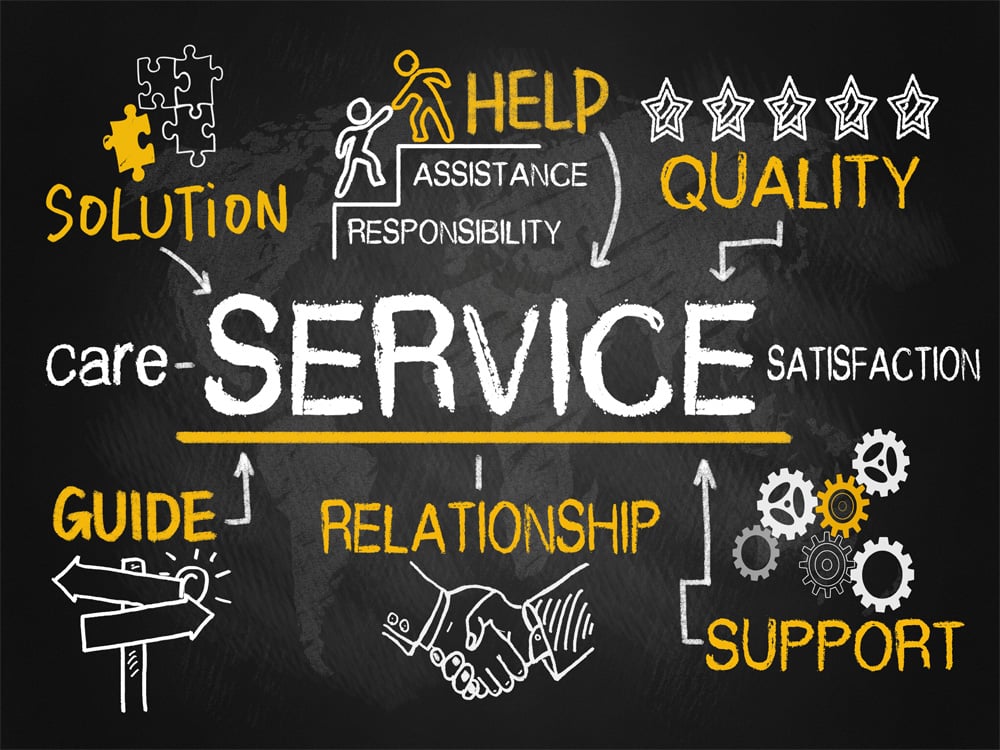
keep life coaching clients for the long haul
The ability of a business to keep customers as repeat clients and keep them from moving to a rival is known as customer retention.
It shows whether the calibre of your service and product satisfy your current clientele.
Additionally, it is essential for the majority of subscription-based businesses and service providers.
READ MORE: https://brandgaytor.com/essential-tips-for-coaches-to-seek-visibility/
Ways to keep life coaching clients for the long haul
- Communicate clearly and regularly.
Effective and timely communication ought to be the top priority. When everyone is preoccupied with finishing the task at hand, communication may suffer.
It is crucial to communicate intelligibly and consistently throughout the project for this reason.
Establish early on that you will collaborate with your client to create value statements that support their business objectives, and that as the project develops, you will monitor project progress in relation to these predetermined value statements.
Naturally, correspondence with a single client shouldn’t continuously and unreasonably take up your personal time or have a detrimental effect on your output.
On the other hand, being accessible shows that you value the project and your client’s satisfaction.
Making your clients feel at ease enough to be candid and open with you goes a long way towards strengthening the bond between you and your clients, in addition to prompt and thorough communication.
They ought to believe that their opinions and worries are valuable.

- Be Upbeat
As a self-employed professional, you have several duties.
Regardless of how overwhelmed or stressed out you may be, it’s crucial to maintain a cheerful demeanour around your clients.
Give off the enthusiasm and assurance you want your clients to see in your work.
People find enthusiasm and zeal to be attractive personality traits, and clients find them enjoyable to work with.

- Consider each customer as a unique individual.
Even though the connection with your client is professional in nature, it can help to acknowledge that you view them as more than just a client.
Depending on your industry, the type of client, and the personality of each individual client, there will be differences in how appropriate this personal connection is.
You could just inquire about the well-being of their kids if you are aware that your client is a parent.
Something more personalized, like sending your client an email with an article from the news about their favourite musician, might be suitable and appreciated if you have a greater connection with them.

- Share your expertise.
Should your client lack comprehension of your specialty, they might feel uninformed about the complexities of the procedure and consequently disengaged from the project’s advancement.
Here’s your chance to impart knowledge that will increase the client’s understanding of what you do and foster confidence in the procedure.
Giving your client an explanation of what you did, why you did it, and how you arrived at your decision will make them feel informed and involved.

- Maintain an open mind.
They have to be able to rely on you as an expert and trust you in order for you to establish long-lasting client relationships.
Maintaining an open policy with regard to professional views and points of view about what’s best for the project is therefore imperative.
It can be tempting to tell the customer what you think they want to hear or refuse your true opinion about their project in order to seem agreeable and avoid an awkward confrontation.
But these actions not only backfire; they also risk harming your reputation, which will lessen the likelihood that you will find a long-term partner.
Clients will appreciate your initiative and drive for excellence if you can speak your mind with confidence and humility.

- Beyond Expectations
Establishing a solid reputation as a freelancer who produces outstanding results is one of the best ways to support the development of strong client relationships.
Be careful not to oversell yourself or make exaggerated promises about your abilities.
By being realistic with your expectations, you give yourself the best chance to wow the client with the finished product and establish yourself as a partner they want to work with going forward.

- Recognize your client’s objectives.
You must have a macro- and micro-understanding of your client if you want to succeed.
You should be aware of the project’s specific aims and objectives on a micro level.
On the other hand, you should be aware of the project’s overall place in the organization as well as any significant information regarding the client’s culture that could be useful to you during the engagement.
Mutual respect and trust will be established in the relationship if you are able to comprehend your client’s objectives.

- Talk in Your Client’s Tongue.
Proficient consultants possess the ability to adjust to the communication preferences, formality, and style of their clients, rather than solely relying on the platforms that they find most comfortable.
For instance, your client might favour text messaging over email or video conferences. Customer experience specialist Matthew Small stated that because each person communicates differently, “every interaction needs to be modified to accommodate that particular person.”
While some people are more talkative, others simply want the facts. The secret is to be flexible. Instead of entering a conversation with a preconceived dialogue, have a plan for what you want to learn from the exchange.
By developing an understanding of the reasons behind the customer’s feelings and/or methods of approaching situations, you can increase your emotional intelligence and attempt to customize your interactions and communications with them.

- Remain humble.
Although you were hired for your expertise, a seasoned consultant will tell you that the client is the real authority in their particular industry.
Perhaps they have specific knowledge about how to position themselves in the market, or they know how to best approach a significant stakeholder, which can help you accomplish the goals of your project.
Respect your client as the authority on their particular business and industry, and be modest in your research regarding the best course of action and a solution that will benefit their organization.

- Employee tools for project delivery.
Getting project delivery organized is essential to leaving a good impression on clients.
Make use of resources like project proposals, contracts, SOWs, client reports, and expert invoices to ensure that your work is delivered in a professional manner from start to finish.
These tools can improve your business acumen and professionalism while offering transparency and project tracking.
Think about your client and figure out what they would find useful. It could be as easy as presenting the project in an eye-catching manner, delivering the materials by hand and providing a thorough explanation or walkthrough, or adding a small but meaningful feature that improves the final output.
A thank-you gift for devoted customers is given at important business anniversaries or elsewhere else.
The holidays may provide an unforeseen joy that improves your working relationship. Finding opportunities to go above and beyond in a way that your clients will value is crucial.

- Grow in appreciation.
Setting boundaries with clients is crucial, but there are instances when going above and beyond will benefit your company.
Set boundaries, but keep an eye out for opportunities to go above and beyond. After working in a field for a while, it’s easy to fall back on old routines.
Instead, take into account the unique circumstances of each client, and don’t be scared to modify your work procedures. While some clients may simply want a written, comprehensive weekly summary of what you’ve accomplished, others may really value hands-on access and want to be involved in every step of your process.
Recall that building a trustworthy relationship requires open communication.
Speak with your clients to learn about their priorities, then take those preferences into account when designing your workflow.
A small amount of careful listening goes a long way towards fostering appreciation and respect.

- Request Input.
By requesting feedback, you give your client the chance to tell you how they felt about the services you provided and suggest improvements.
In addition to helping you forge stronger bonds with other customers, this demonstrates to the one you are asking how much you respect both their input and the calibre of the services you provide.
Create a survey using a tool like Qualtrics, or email them a questionnaire in Word or PDF format so they can respond to specific questions and offer general input.
Once you’ve received it, send them a follow-up email to express your gratitude for their time.

- After your project is finished, follow up.
Maintaining communication with clients after your project is finished is a great way to build a relationship that goes beyond your current project.
Tell them about a significant achievement you recently had with another client (name can be withheld), share the thought leadership you create, and let them know you have learned a new skill.
This is a fantastic method to reaffirm your worth and position yourself for more business.

Conclusion
Consistency, empathy, and clear communication are key to retaining life coaching clients. Building trust, setting realistic expectations, and adapting strategies to individual needs foster long-term relationships. Regular check-ins, ongoing support, and celebrating achievements contribute to sustained client engagement.
FAQ (frequently asked questions)
Q1: How can I build trust with my life coaching clients?
A: Establish open communication, demonstrate empathy, and maintain confidentiality to build a strong foundation of trust.
Q2: What role does goal-setting play in retaining clients?
A: Collaborate with clients to set realistic and achievable goals, regularly revisit and adjust them as needed to keep the coaching process dynamic and aligned with their aspirations.
Q3: How do I adapt my coaching style to individual client needs?
A: Tailor your approach by understanding each client’s personality, learning style, and preferences, ensuring a personalized coaching experience.
Q4: What is the importance of ongoing support and follow-up?
A: Provide consistent support, check-ins, and follow-ups to reinforce progress, address challenges, and show that you are invested in their journey beyond individual sessions.
Q5: How can I incorporate feedback into the coaching relationship?
A: Encourage open feedback, actively listen to your clients’ concerns, and adapt your coaching methods based on their input to enhance the overall coaching experience.

Add a Comment